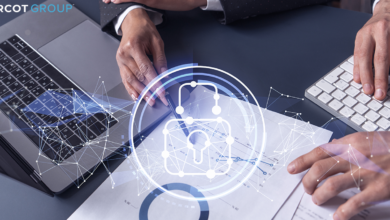Intellectual Property Enforcement: Latest Strategies and Technologies
Explore cutting-edge strategies and technologies for Intellectual Property Enforcement in 2024. Discover DRM, blockchain, AI, and IoT solutions.

In the fast-paced digital world of today, enforcement of intellectual property rights is more important than ever. Intellectual property (IP) must be protected when companies and artists innovate in order to guarantee that they are fairly acknowledged and compensated for their contributions. The economic effects of IP theft can be disastrous in the absence of strong IP enforcement, resulting in large financial losses and inhibiting future innovation.
The field of IP enforcement is changing quickly as a result of new technology. Conventional approaches are no longer adequate to counter the advanced strategies used by intellectual property infringement offenders. This article examines the most recent tactics and technological developments in IP enforcement, emphasising how innovations like blockchain, artificial intelligence, digital rights management, and the Internet of Things are transforming IP protection in 2024 and beyond.
Intellectual Property Enforcement
Definition of Intellectual Property
Intellectual property refers to creations of the mind, such as inventions, literary and artistic works, designs, symbols, names, and images used in commerce.
The Need for Effective IP Enforcement
Economic Impact of IP Theft
IP theft leads to significant financial losses for businesses and economies worldwide. It stifles innovation, undermines investment in research and development, and results in job losses.
Protecting Innovation and Creativity
Effective IP enforcement ensures that creators and innovators receive due recognition and compensation for their work, fostering a culture of continuous innovation and creativity.
Traditional IP Enforcement Strategies
Legal Frameworks
Countries have established legal frameworks to protect IP rights, including treaties and agreements like the TRIPS Agreement (Trade-Related Aspects of Intellectual Property Rights).
Role of Law Enforcement Agencies
Law enforcement agencies play a crucial role in investigating and prosecuting IP crimes. Specialized units often work in collaboration with international organizations to combat cross-border IP infringement.
Court Proceedings and Litigation
Litigation is a common method of IP enforcement, where disputes are resolved through court proceedings. This can be a lengthy and costly process but remains an essential tool for protecting IP rights.
Technological Advancements in IP Enforcement
Digital Rights Management (DRM)
DRM technologies control the use, modification, and distribution of copyrighted works. They are widely used in the software, music, and publishing industries to prevent unauthorized access and copying.
Blockchain Technology
Blockchain provides a decentralized ledger system that can securely track IP rights and transactions. It offers transparency, reduces fraud, and enhances trust in the IP ecosystem.
Artificial Intelligence and Machine Learning
AI and machine learning technologies are revolutionizing IP enforcement by automating the detection of infringements, predicting IP theft patterns, and enhancing legal research.
Internet of Things (IoT)
IoT devices can monitor the use of IP in real time, providing immediate alerts and enforcement actions. This is particularly useful in industries where IP is embedded in physical products.
Digital Rights Management (DRM)
How DRM Works
DRM systems encrypt digital content and control access through licenses and user authentication. They restrict actions like copying, sharing, and altering protected works.
Benefits of DRM
Protects revenue streams by preventing unauthorized distribution. Ensures creators and publishers are compensated for their work. Enhances consumer trust by providing legitimate access channels.
Challenges and Limitations
DRM systems can be circumvented by determined infringers. They may restrict legitimate uses, leading to consumer dissatisfaction. Ongoing technological advancements require constant updates to DRM systems.
Blockchain Technology
Introduction to Blockchain
Blockchain is a distributed ledger technology that records transactions in a secure, transparent, and immutable manner. Each block contains a list of transactions, and once added, it cannot be altered.
Applications of Blockchain in IP
Blockchain can record IP rights, providing indisputable proof of ownership and creation dates. Smart contracts automate licensing agreements and ensure accurate royalty payments. Blockchain can verify the authenticity of products, reducing the risk of counterfeit goods.
Artificial Intelligence and Machine Learning
Role of AI in IP Enforcement
AI algorithms can analyze vast amounts of data to identify potential IP infringements. They can scan online marketplaces, social media, and other digital platforms for unauthorized use of IP.
AI Tools and Techniques
Identifies copyrighted images used without permission. Detects plagiarism and unauthorized use of copyrighted text. Anticipates potential IP infringements based on historical data and trends.
Predictive Analytics for IP Infringement Detection
Predictive analytics uses statistical techniques and machine learning algorithms to predict future IP infringements. This proactive approach helps in early detection and prevention.
Internet of Things (IoT)
IoT and IP Protection
IoT devices embedded with sensors can monitor the use of IP in real time. For example, a smart sensor in a product can detect if it is being used outside authorized parameters.
Monitoring and Enforcement via IoT
IoT devices can send immediate alerts if IP is being used unlawfully. Integrates with DRM systems to automatically restrict access or usage of IP.
Real-World Applications
Ensure that patented technologies within smart home products are not tampered with or duplicated. Monitors the use of patented processes in manufacturing, ensuring compliance with licensing agreements.
Collaboration and Partnerships
Public-Private Partnerships
Governments and private entities collaborate to strengthen IP enforcement. These partnerships can enhance resources, share expertise, and coordinate actions against IP crimes.
International Cooperation
Global cooperation is essential to combat cross-border IP infringement. International organizations like WIPO (World Intellectual Property Organization) facilitate such efforts.
Industry Collaborations
Companies within the same industry often work together to address common IP challenges, sharing best practices and jointly developing enforcement technologies.
Challenges in Modern IP Enforcement
Evolving Nature of IP Crimes
As technology evolves, so do the methods of IP theft. Staying ahead of sophisticated infringers requires continuous innovation in enforcement strategies.
Jurisdictional Issues
IP enforcement is complicated by the fact that laws vary significantly across different countries. Coordinating actions and legal proceedings can be challenging.
Balancing Enforcement with Privacy
Effective IP enforcement must balance the need to protect IP rights with respecting individual privacy and data protection laws.
Future Trends in IP Enforcement
Emerging Technologies
New technologies such as quantum computing and advanced cryptography are expected to further enhance IP enforcement capabilities.
Policy and Regulatory Changes
Governments are continually updating policies and regulations to address new IP challenges. Staying informed about these changes is crucial for effective enforcement.
Impact of Globalization
Globalization has increased the complexity of IP enforcement, requiring more robust international cooperation and harmonization of laws.
Read More: How Blockchain is Transforming Intellectual Property Management
Conclusion
At this critical juncture, the sector of intellectual property enforcement is well-positioned to protect innovation and creativity by utilising cutting-edge technologies and strategic partnerships. Looking ahead, it is evident that a multifaceted strategy integrating cutting-edge technologies like blockchain, digital rights management, artificial intelligence, and the Internet of Things with legal frameworks will be crucial. These technologies simplify the process of establishing ownership and enforcing rights across international platforms in addition to improving IP infringement detection and prevention.
In addition, as IP enforcement develops, it must constantly adjust to new risks and legislative modifications. In order to effectively address cross-border intellectual property concerns, businesses and policymakers need to prioritise investments in technology and encourage international cooperation. By doing this, we can protect the integrity of intellectual property rights, promote economies that are driven by innovation, and guarantee a level playing field that is fair to both companies and creators.
FAQs
What is Intellectual Property?
Intellectual property refers to creations of the mind, such as inventions, literary and artistic works, designs, and symbols used in commerce. It encompasses trademarks, patents, copyrights, and trade secrets.
How does DRM protect IP?
Digital Rights Management (DRM) technologies control access to copyrighted content, preventing unauthorized copying, sharing, and modification. They ensure that creators are compensated for their work by restricting usage to authorized users.
Can blockchain prevent IP theft?
Yes, blockchain can help prevent IP theft by providing a secure and transparent way to record and verify IP rights. It ensures that all transactions related to IP are immutable and traceable, reducing the risk of fraud and counterfeiting.
How do AI and ML help in IP enforcement?
Artificial Intelligence (AI) and Machine Learning (ML) assist in IP enforcement by automating the detection of infringements, analyzing large datasets to identify patterns, and predicting potential IP theft. These technologies enhance the efficiency and effectiveness of IP protection efforts.
What are the challenges in IP enforcement today?
Modern IP enforcement faces challenges such as the evolving nature of IP crimes, jurisdictional issues across different countries, and balancing the need for enforcement with privacy concerns. Continuous innovation and international cooperation are essential to address these challenges.











